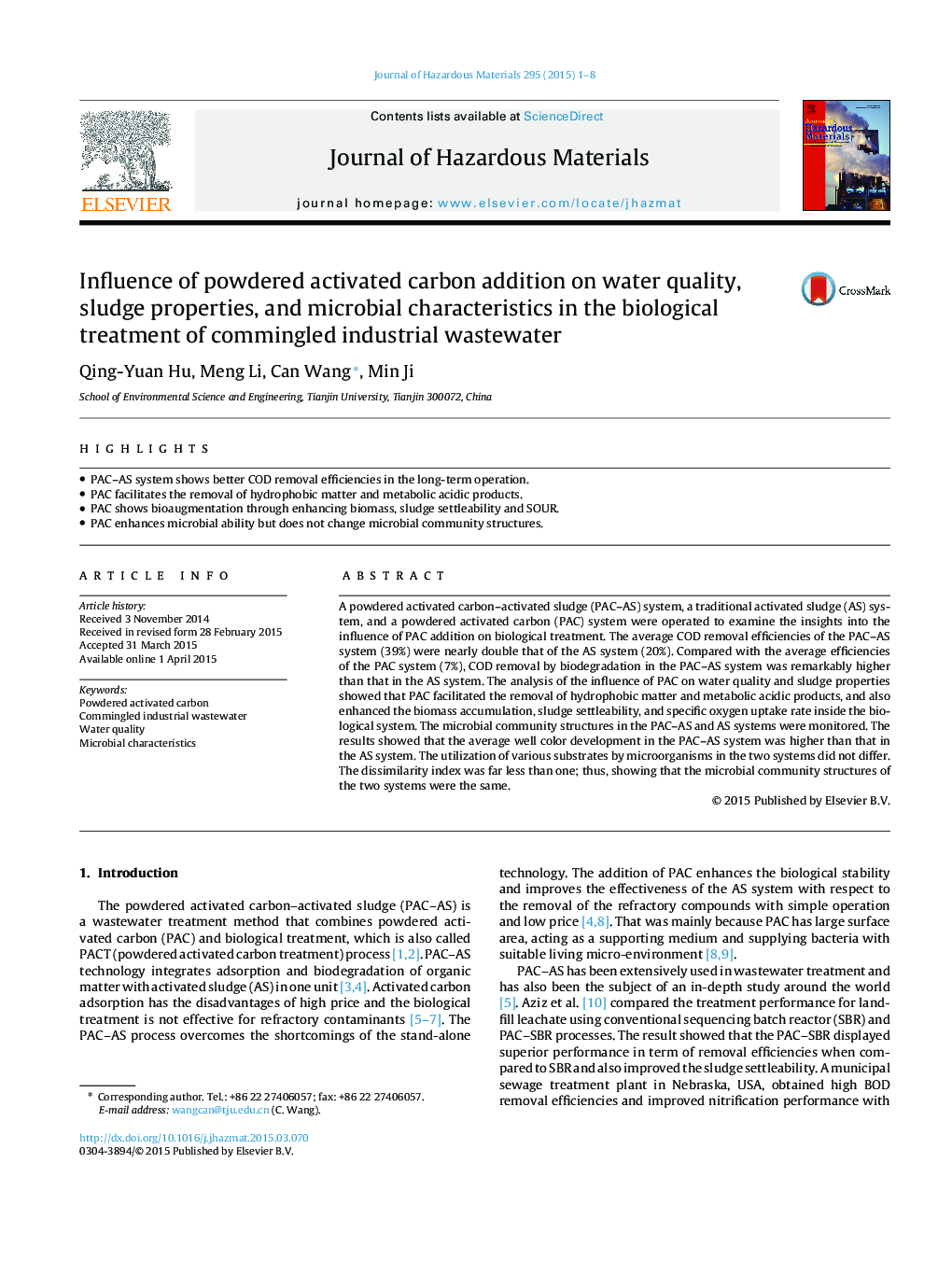| Article ID | Journal | Published Year | Pages | File Type |
|---|---|---|---|---|
| 6971027 | Journal of Hazardous Materials | 2015 | 8 Pages |
Abstract
A powdered activated carbon-activated sludge (PAC-AS) system, a traditional activated sludge (AS) system, and a powdered activated carbon (PAC) system were operated to examine the insights into the influence of PAC addition on biological treatment. The average COD removal efficiencies of the PAC-AS system (39%) were nearly double that of the AS system (20%). Compared with the average efficiencies of the PAC system (7%), COD removal by biodegradation in the PAC-AS system was remarkably higher than that in the AS system. The analysis of the influence of PAC on water quality and sludge properties showed that PAC facilitated the removal of hydrophobic matter and metabolic acidic products, and also enhanced the biomass accumulation, sludge settleability, and specific oxygen uptake rate inside the biological system. The microbial community structures in the PAC-AS and AS systems were monitored. The results showed that the average well color development in the PAC-AS system was higher than that in the AS system. The utilization of various substrates by microorganisms in the two systems did not differ. The dissimilarity index was far less than one; thus, showing that the microbial community structures of the two systems were the same.
Related Topics
Physical Sciences and Engineering
Chemical Engineering
Chemical Health and Safety
Authors
Qing-Yuan Hu, Meng Li, Can Wang, Min Ji,
